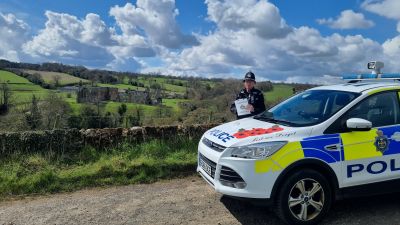Durham, Northumbria and Cleveland Police join together to crackdown on rural crime

A new police operation to fight rural crime is being called a 'game changer' as it stops criminals travelling into rural areas.
Operation Hawkeye, is targeting trespassers and poachers and sees police forces across North East England sharing intelligence on those who travel to commit rural crimes.
Traditional poaching and trespass legislation can be difficult to prove in court but now Durham Constabulary is using a different type of legislation: Community Protection Warnings (CPWs) and Community Protection Notices (CPNs).
What are CPWs and CPNs?
CPWs can be issued to anyone over 16 if an officer is satisfied on reasonable grounds that they have been involved in conduct that is having a detrimental effect, of a persistent and continuing nature, on the quality of life of those in the locality, and the conduct is unreasonable.
Once a suspect is issued a CPW, their details are taken and if stopped again, they're given a CPN. If that is broken they can be prosecuted through the courts.
They can be issued retrospectively, which means Police can issue them to those spotted by Ruralwatch members who document suspicious people and vehicles in rural areas.
Officers also have the powers to seize equipment or vehicles they believe are being used to commit rural crimes.
If found guilty at court, offenders can face prison or fines of up to £2,500.
Durham Constabulary’s Wildlife Crime Officer, PC Dave Williamson, says “The use of CPWs and CPNs allows us to prosecute offenders more easily and we are already seeing successes.
“It covers a wide range of offences from anti-social behaviour to poaching and other harmful activities.
“Officers are also now able to issue this legislation to seize vehicles which has a huge impact in disrupting offenders and is a game-changer for taking on criminals who try to target different rural areas.”